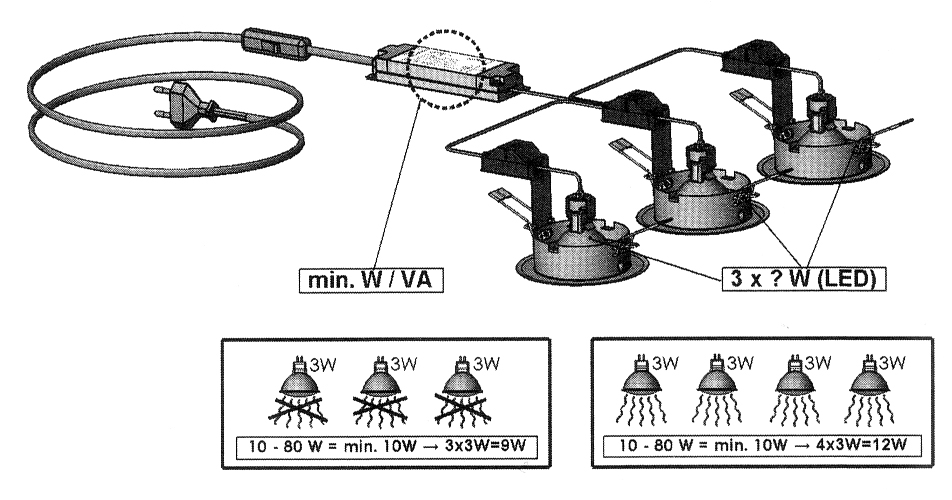- Joined
- 27 Jan 2008
- Messages
- 24,901
- Reaction score
- 2,877
- Location
- Llanfair Caereinion, Nr Welshpool
- Country

Decided to replace my four failed LED GU 5.3 lamps, in the bathroom. Lidi were doing pairs of 3W lamps for £6 so forked out £12 to renew them all. And on the outside packaging it states 50 Hz so they should do the job nicely.
Once opened it had a flyer inside which said
“GB
1. Connecting the lamp to electronic transformers that are not designed for LED applications can lead to flickering or damage the lamp.
2. Be sure to consider an eventually required base load on the secondary side when using an electronic transformer.
3. LED lamps should function seamlessly with conventional (magnetic and/or wound) transformers.”
This raises some point.

The picture all part of instructions which came with lamps.
Once opened it had a flyer inside which said
“GB
1. Connecting the lamp to electronic transformers that are not designed for LED applications can lead to flickering or damage the lamp.
2. Be sure to consider an eventually required base load on the secondary side when using an electronic transformer.
3. LED lamps should function seamlessly with conventional (magnetic and/or wound) transformers.”
This raises some point.
- Why does it say 50Hz on the outer readable packaging then say what to do with an electronic transformer which is unlikely to be 50 Hz.
- Why do I see so often on these pages about using a “Driver” when be it current or voltage regulated near all drivers as DC, clearly at 50 Hz these lamps are AC.
The picture all part of instructions which came with lamps.




